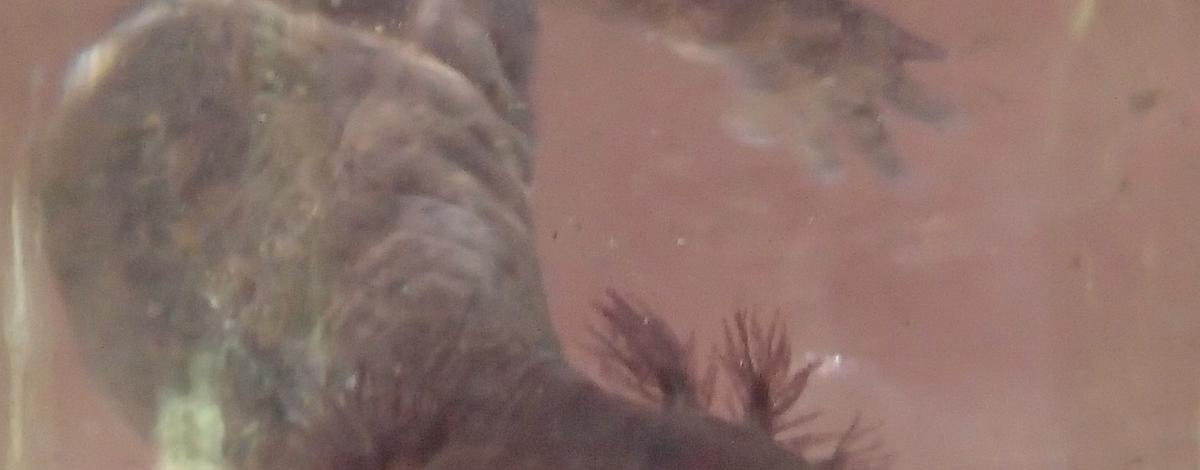In the Idaho Panhandle there are two species of amphibian that specialize in breeding in streams instead of still waters like ponds and puddles.
Idaho giant salamanders (a Species of Greatest Conservation Need) and rocky mountain tailed frogs both have some special body adaptations to help their young survive in a more turbid environment.
I was doing a stream amphibian survey the other day in GMU9. To do the survey I basically turn over rocks in the stream and see what's living underneath. Under this rock I found some amphibian eggs firmly attached (so they don't just wash downstream).
A closer look reveals larval amphibians growing inside the eggs. It's difficult to tell if they are tailed frogs or Idaho giants, but at this point I was getting excited. I knew amphibians were in the area and I might be in for a good survey.
Sure enough...in a couple rocks I found tailed frog tadpoles firmly attached to the underside.
It's easy to identify tailed frog tadpoles because they are the only tadpole in the Panhandle with a large sucker mouth which helps them stay attached to rocks and not wash downstream.
Just as I was starting to convince myself the eggs were tailed frogs... I turned a rock over and found this larval Idaho giant salamander.
This was the first time I'd ever seen this species and, to put it mildly, I was thrilled!
Notice how it's external gills are pretty short? This is probably because it lives in flowing water and more oxygen passes by the gills than if it lived in still water.
These larval long-toed salamander have much longer and more feathery gills because they usually live in still water. They need more surface area on their gills to get oxygen out of the still water. (These were found at a different site).
Wherever amphibians are found, garter snakes often follow no matter if it's still or moving water. Amongst other things, garter snakes feed on tadpoles and larval salamanders. There are two species of garter snake in the Panhandle. Even though it swims and chases tadpoles, this species is called a terrestrial garter snake. You can tell because it has 8 upper labial scales (instead of 7 like common garter snakes). The labial scales are the ones right above it's mouth.
What a great day to be in the stream!

